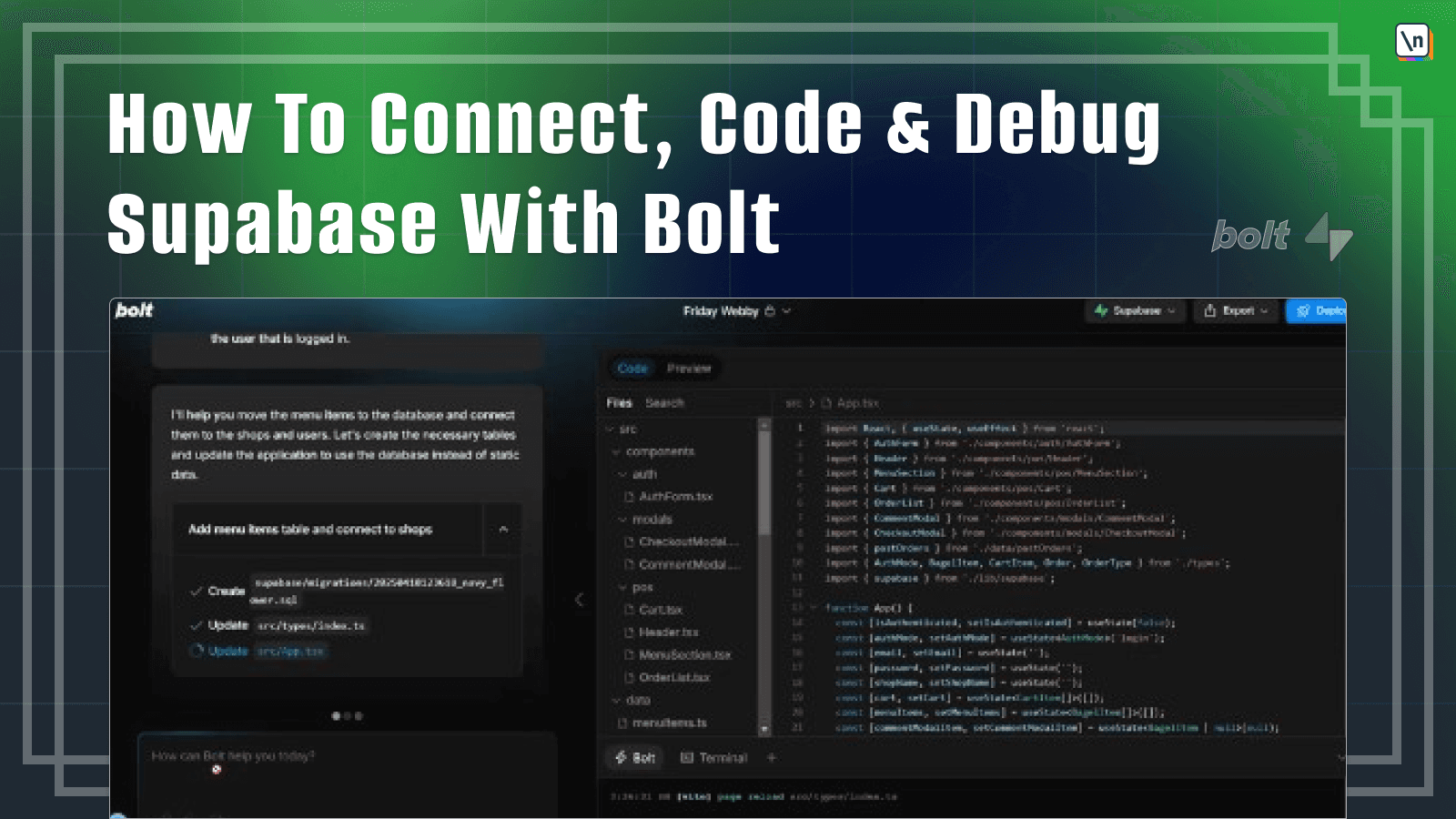How To Make Bolt Use 5x Fewer Tokens & Execute 5x Faster
This lesson preview is part of the How To Connect, Code & Debug Supabase With Bolt course and can be unlocked immediately with a \newline Pro subscription or a single-time purchase. Already have access to this course? Log in here.
Get unlimited access to How To Connect, Code & Debug Supabase With Bolt, plus 90+ \newline books, guides and courses with the \newline Pro subscription.

[00:00 - 00:29] Now, one thing that it's doing, and I'm not a big fan of, is that although we have a new stream right now, basically, we're building a stream, everything is still on app.tsx. So before we move further, we are going to prompt the, to prompt the world, to file and create a better fun setup that is more organized.
[00:30 - 00:58] Not just because I'm some kind of organization freak, but mostly because if we keep it more organized like this, first of all, you will get better load times because right now we're pasting the same file over and over again. So if we have fewer lines to paste, we will have faster load times, and we're going to use fewer tokens.
[00:59 - 01:11] So we can do more stuff and build more things in the same plan, whether that's free or bro, or whatever you need. I suggest you start with free.
[01:12 - 01:26] You don't need to pay for anything. And if you need to and want to, you can some point upgrade to bro, if you feel that this restricted for what you want to build in terms of how much you can work on per day.
[01:27 - 01:41] But as you can see in the code, it's already 600 life long, and that's the exact idea for our, the file. So, beer or we are any more features.
[01:42 - 02:13] Please re-fathom the file rate of the ESX file and speed-width, and you don't want our growth-free price based on the deployment, and it's your case. Reflow is where I now, the file is too.
[02:14 - 02:23] So, one, this will take us a couple of minutes more to implement. You can save us a whole lot more time down the road.
[02:24 - 02:34] And this is some necessary able, but right after that, we are going to indeed add the backend for application. Just stay tuned.
[02:35 - 02:51] As you can see, it has already created a whole bunch of different, five, one, two, three, four, five, six, seven, eight, nine, five, for the same features that that one quite had. Ten, five, no.
[02:52 - 03:06] So, you can see that, yeah, you could use some of your pattern. So, for example, this find the second one, is now just one half, four, seven, nine, no.
[03:07 - 03:15] This might be one of our biggest files, I forget. But it also finds a lot of the interface section of the base.
[03:16 - 03:25] And, for example, the common model is on the 50-line development. And then, hopefully, we'll have this functionality.
[03:26 - 03:38] Okay, the name is "Sogberengbene", "Mainebene Stod". And I'm back on the same screen right now.
[03:39 - 03:44] I take my orders, I see how these are orders.